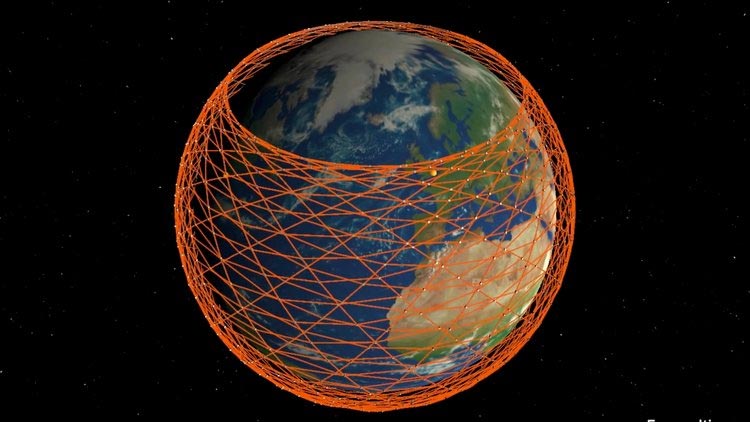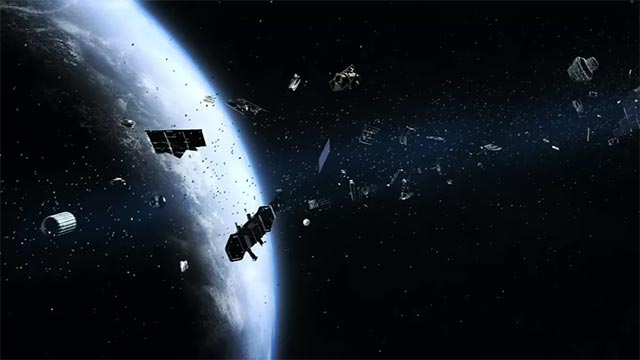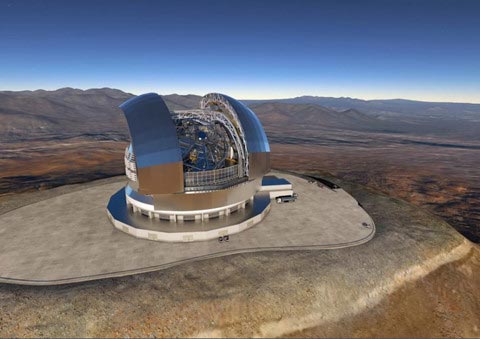SpaceX lost 3 Starlink satellites after a month launched into space
It has been more than a month since SpaceX successfully launched the first 60 satellites on Earth orbit to realize the company's giant Starlink initiative, and nearly all satellites have been scheduled, only except for 3 cases that cannot be confirmed because SpaceX still cannot establish a connection to these satellites so far.
If you don't know, Starlink is the initiative of the former aerospace group founder SpaceX, the billionaire of Elon Musk, regarding establishing a global high-speed wireless Internet network with a combination of close 12,000 satellites signal from outer space (more than 6 times the number of outer spacecraft operating in space). Under the plan, Starlink will help create a new type of wireless network connection on Earth, which is 50% faster than the current fiber optic system. In the first phase, SpaceX successfully launched 60 test satellites into a space 440 km away from the Earth by Falcon 9. Each satellite weighs about 227kg.
- Elon Musk's global wireless Internet network will kill fiber optic cables
 Starlink satellite in space
Starlink satellite in space
SpaceX planned to contact all 60 satellites after they were successfully put into orbit, but so far, nearly 40 days have passed since they only connected 57 satellites. If the remaining three satellites remain in the air for a few days, they can confirm that they have had problems and cannot continue their mission. These 3 satellites will continue to fly around the Earth for a while, but will eventually be pulled down to our planet due to the effects of gravity and being "yellowed" right in the atmosphere.
The good news is that the remaining 57 satellites have operated as planned. According to SpaceX, 45 Starlink satellites have successfully increased their height with support from propulsion engines on the main compartment, while reaching the official trajectory of 550km from scientists. . The other 5 satellites are still in the process of raising the trajectory, 5 more satellites are undergoing additional system testing before completing the trajectory. For the remaining two satellites, SpaceX intentionally disables the propulsion engines on their main compartment in order for the two satellites to collide directly with the Earth's atmosphere. Of course this is not for fun, SpaceX wants to test the 'trajectory' process for Starlink satellites - a rather expensive, but necessary test.
Thus, out of 60 Starlink satellites launched into space, 5 of them are likely to "rest" right in the Earth's atmosphere. According to SpaceX's announcement, due to the design characteristics and the low orbital position, all 5 satellites (3 out of contact and 2 absorbers) will disintegrate when they enter the Earth's atmosphere, in order to prove proving SpaceX's commitment to a clean space environment, without 'space waste', as well as to ensure safety for underground areas.
- Elon Musk's Starlink network is capable of imbalancing the global network economy
 12,000 Starlink satellites will cover the entire Earth
12,000 Starlink satellites will cover the entire Earth
As mentioned, these 60 satellites (launched May 23) are only the first of nearly 12,000 Starlink satellites that SpaceX intends to orbit and fly around the Earth. The company received a nod from the US Federal Communications Commission for a plan to launch a batch of 4,409 satellites in the second phase of the program. At stage 3, the final stage and also the largest, there will be 7,518 Starlink satellites to be taken up into space.
These 12,000 satellites will fly over a relatively low orbit above the atmosphere, and cover the internet to the ground below, providing services to all regions around the world. The idea here is to provide stable coverage for rural or remote areas, rugged terrain, where the establishment of fiber optic cables will be extremely difficult and expensive. SpaceX also wants to provide a more flexible internet connection service option to users regardless of where they go, especially areas outside the network's coverage area.
The company will soon start using its fledgling 'Starlink' constellation to stream video content and play high-bandwidth games to test how much service time is lagged. However, SpaceX said it will make some modifications to the design and equip the satellites in phase 2, based on the results from the last launch. 'So far, we are satisfied with the performance of satellites, SpaceX will continue to promote Starlink's ability to operate to gain even more positive results in the future' SpaceX representative said in a declare.
The fact that three of SpaceX's 60 Starlink satellites lose signals may cause more concerns in the space research community. Some experts have worried about the fragments of these satellites that could become unpleasant waste in space, affecting future plans. According to the latest figures from the European Space Agency. Currently there are about 2,000 satellites operating in orbit around the Earth, and after the Starlink project completes this figure will reach nearly 14,000.
- NASA: 'Saturn's Titan moon will be our next stop'
 After the Starlink project is completed, there will be nearly 14,000 satellites operating in space
After the Starlink project is completed, there will be nearly 14,000 satellites operating in space
The sudden increase in the number of satellites in earth orbits can greatly increase the risk of satellite collisions in space, which will not only damage money. , that you create many debris floating in space, seriously threatening the safety of other spacecraft and satellites on duty.
A study conducted by NASA argued that 99% of the satellites working in space need to be removed from Earth orbit for up to 5 years to ensure the risk of collisions. in low space is always kept at a safe level. The bigger problem, however, is that if you can't communicate with the satellite, there's no way to control and get that satellite out of Earth's orbit.
However, SpaceX said it has made many changes in design, systems and materials to ensure that their satellites do not cause "space pollution". SpaceX's chief executive, Elon Musk, said Starlink's management system directly uses data from the US Air Force to pinpoint the exact location and itinerary of other satellites in space, from It helps minimize the possibility of collisions on space. At the same time in April, SpaceX's proposal to fly 60 Starlink satellites in the first phase flew closer to Earth than was approved by the FCC. Thus, these satellites will be pulled downwards and fall out of orbit faster, as well as avoiding collisions with other satellites operating at higher levels.
- Admire the design of the most award winning NASA space design competition: Harmony, full of comfort, and safety
 The pieces in the satellite in space are a dangerous waste
The pieces in the satellite in space are a dangerous waste
SpaceX's Starlink project also received considerable attention from astronomers. Astronomers who study light and radio have expressed concern about how the "Starlink" constellation can negatively affect space observations.
When the first 60 Starlink satellites were launched, they became much brighter in the sky than originally anticipated, and scientists warned that light reflected from these media could affect the range. Observations as well as photographs of telescopes. In addition, radio astronomers also suspect that the frequency at which these satellites work may exceed the frequency they are using to study distant objects in space. In this regard, SpaceX said it worked closely with the world's leading astronomical teams to find ways to mitigate any potential Starlink impact on space science research.
- Admire 10 priceless photos taken by NASA's Spitzer telescope
 Dense Starlink satellites can affect telescope observations
Dense Starlink satellites can affect telescope observations
It is still unclear when the second phase of the Starlink project with the presence of 4,409 satellites will take place. Elon Musk said his company will continue to launch a series of 60 satellites at once, with the goal of bringing 1,000 to 2,000 satellites into space each year. According to SpaceX experts, it will take at least 24 launches to bring a total of 12,000 Starlink satellites into space and achieve global internet coverage.
You should read it
- Elon Musk's Starlink network is capable of imbalancing the global network economy
- What is Starlink? How does satellite internet work?
- Elon Musk posted a Twitter post, showing off the Internet provided by the Starlink satellite system was working
- Starlink satellite internet expands globally with new package priced at $200/month
- Starlink satellite accused of 'can be deadly'
- Elon Musk's satellite Internet device was hacked with a homemade device for $ 25
 Some Macs cannot install the Windows 10 update May 2019 Update
Some Macs cannot install the Windows 10 update May 2019 Update Windows Phone 8.x and Windows 8 are no longer receiving application updates
Windows Phone 8.x and Windows 8 are no longer receiving application updates Painter showed off painting with the top paint like Photoshop, who thought the people would show off 'good' equally
Painter showed off painting with the top paint like Photoshop, who thought the people would show off 'good' equally US lawmakers formally requested Facebook to suspend the Libra electronic money project
US lawmakers formally requested Facebook to suspend the Libra electronic money project Many Android users discover that their phones have spyware installed after traveling to China
Many Android users discover that their phones have spyware installed after traveling to China The Cuban government considered using electronic money to overcome US sanctions
The Cuban government considered using electronic money to overcome US sanctions